Throughout human history, people have built remarkable structures that have stood the test of time, offering a glimpse into the ancient world. These structures, some dating back thousands of years, reflect the ingenuity, craftsmanship, and cultural significance of early civilizations. From temples and pyramids to burial mounds and homes, these ancient constructions tell stories of human achievement, religious practices, and everyday life. Many of these sites were designed with astronomical precision, while others served as places of worship, burial, or ceremony. Exploring the world’s oldest structures reveals not only their architectural marvels but also the lasting legacy of our ancestors.
Göbekli Tepe, Turkey (circa 9600 BCE)
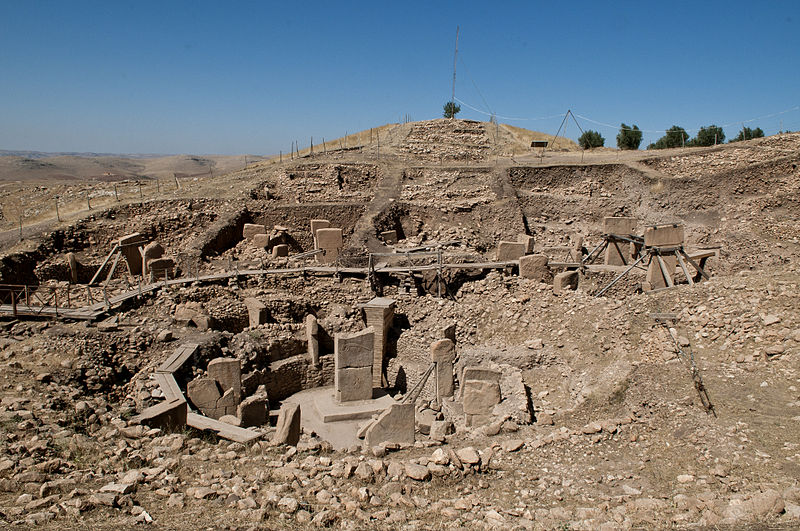
Göbekli Tepe is widely considered the world’s oldest known temple, dating back to the Pre-Pottery Neolithic period. This archaeological marvel, located in southeastern Turkey, was built around 11,600 years ago, pushing back the timeline of human civilization. The site features massive stone pillars, arranged in circles, adorned with intricate carvings of animals. Its builders were hunter-gatherers, which challenges the notion that large, complex structures were only built after the advent of agriculture. Despite its immense age, the craftsmanship in the stones is extraordinary. Abandoned around 8200 BCE, it was intentionally buried, preserving it for millennia. Excavations continue to reveal new secrets about this mysterious place.
Cairn of Barnenez, France (circa 4850 BCE)
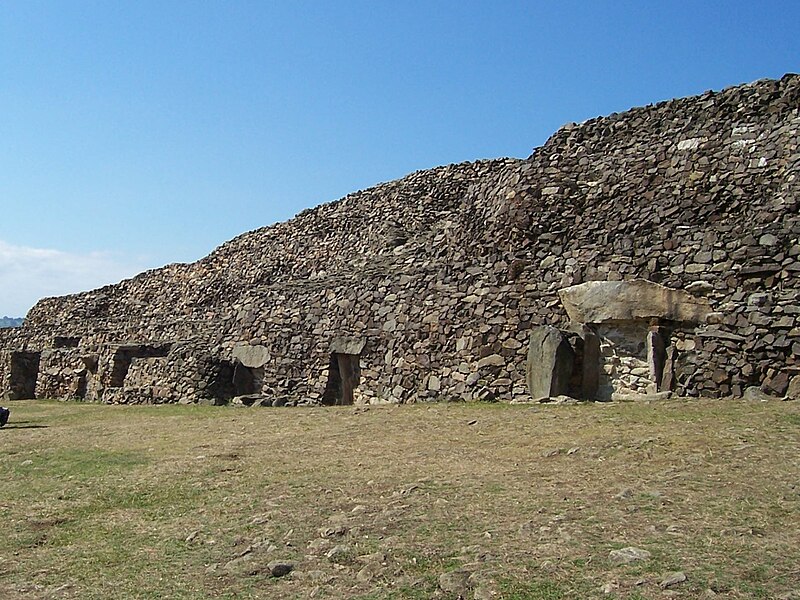
Located in Brittany, France, the Cairn of Barnenez is one of the oldest and most significant megalithic monuments in Europe. This massive stone structure was constructed around 4850 BCE, making it older than the pyramids of Egypt. It is a long, trapezoidal burial mound built from 14,000 tons of stone. The cairn contains 11 burial chambers, which were used for communal burials. Interestingly, the monument was forgotten for centuries until its rediscovery in the 19th century. Today, it stands as a testament to early Neolithic funerary practices. Archaeologists have also uncovered carved stones and pottery fragments at the site.
Skara Brae, Scotland (circa 3180 BCE)
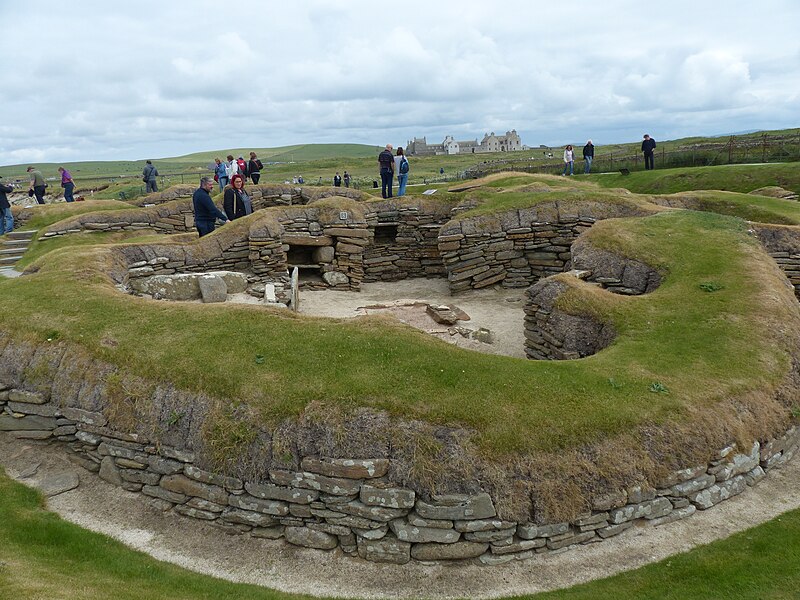
Skara Brae, situated on the Orkney Islands of Scotland, is a remarkably well-preserved Neolithic village. Dating to around 3180 BCE, it offers a glimpse into the daily lives of its inhabitants over 5,000 years ago. The village consists of eight stone houses, interconnected by covered passageways, all cleverly built into the ground for insulation. Skara Brae was inhabited for several centuries before being abandoned around 2500 BCE, likely due to climate change. The interiors of the houses are striking, with stone furniture still intact, including beds, shelves, and hearths. Skara Brae was uncovered by a storm in 1850, revealing its incredible preservation. This UNESCO World Heritage Site continues to fascinate visitors and scholars alike.
Knap of Howar, Scotland (circa 3700 BCE)

Also located in Orkney, the Knap of Howar is a stone-built farmstead dating back to around 3700 BCE. It is considered the oldest preserved stone house in Northern Europe. The structure consists of two rectangular buildings, which were likely used as a home and workshop by early farmers. Its thick stone walls have endured millennia of harsh weather conditions. The residents of Knap of Howar would have lived a simple life, practicing agriculture and animal husbandry. Pottery and tools discovered on-site suggest a thriving community. Today, the structure remains remarkably intact, providing valuable insights into Neolithic life.
Stonehenge, England (circa 3000 BCE)

Stonehenge is one of the most famous prehistoric monuments in the world, with construction beginning around 3000 BCE. Located on Salisbury Plain in England, this iconic stone circle has puzzled researchers for centuries. The site was built in multiple stages, with the final phase completed around 1600 BCE. Its massive sarsen stones, some weighing up to 25 tons, were transported from miles away. Though its exact purpose remains unclear, theories suggest it was used as a burial site, astronomical calendar, or place of worship. Stonehenge is a UNESCO World Heritage Site and remains a symbol of ancient engineering prowess. Its alignment with the solstices continues to intrigue modern visitors.
Newgrange, Ireland (circa 3200 BCE)
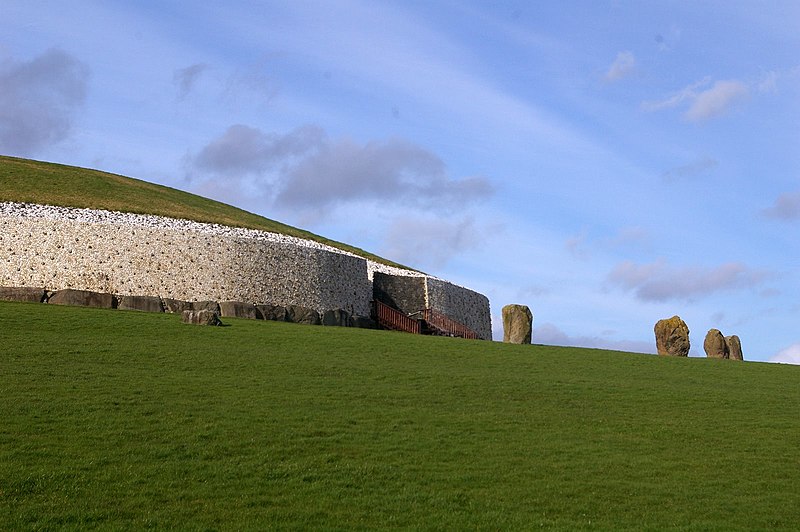
Newgrange is an ancient passage tomb located in County Meath, Ireland, and is older than the pyramids of Giza. Built around 3200 BCE, this impressive structure consists of a circular mound and a passage leading to a central chamber. During the winter solstice, sunlight streams through the passage and illuminates the inner chamber, revealing the builders’ sophisticated understanding of astronomy. The tomb is adorned with intricate spiral carvings, which hold symbolic significance. Newgrange was used for both burial and ceremonial purposes. It is part of the Brú na Bóinne complex, a UNESCO World Heritage Site. This Neolithic monument continues to draw visitors for its historical and astronomical importance.
Monte d’Accoddi, Italy (circa 4000 BCE)

Monte d’Accoddi is an ancient ziggurat-like structure located in Sardinia, Italy, dating back to around 4000 BCE. This unique monument was initially used as an altar for religious ceremonies. Its design resembles Mesopotamian ziggurats, though its builders belonged to a distinct culture. Monte d’Accoddi went through several phases of construction, with a stepped pyramid built atop an earlier platform. Archaeologists have uncovered evidence of sacrificial offerings, including animal bones and pottery. The site fell into disuse around 1600 BCE, but its remnants remain a testament to the ingenuity of early Sardinian cultures. Its true purpose is still the subject of debate among researchers.
The Dolmens of Antequera, Spain (circa 3700 BCE)
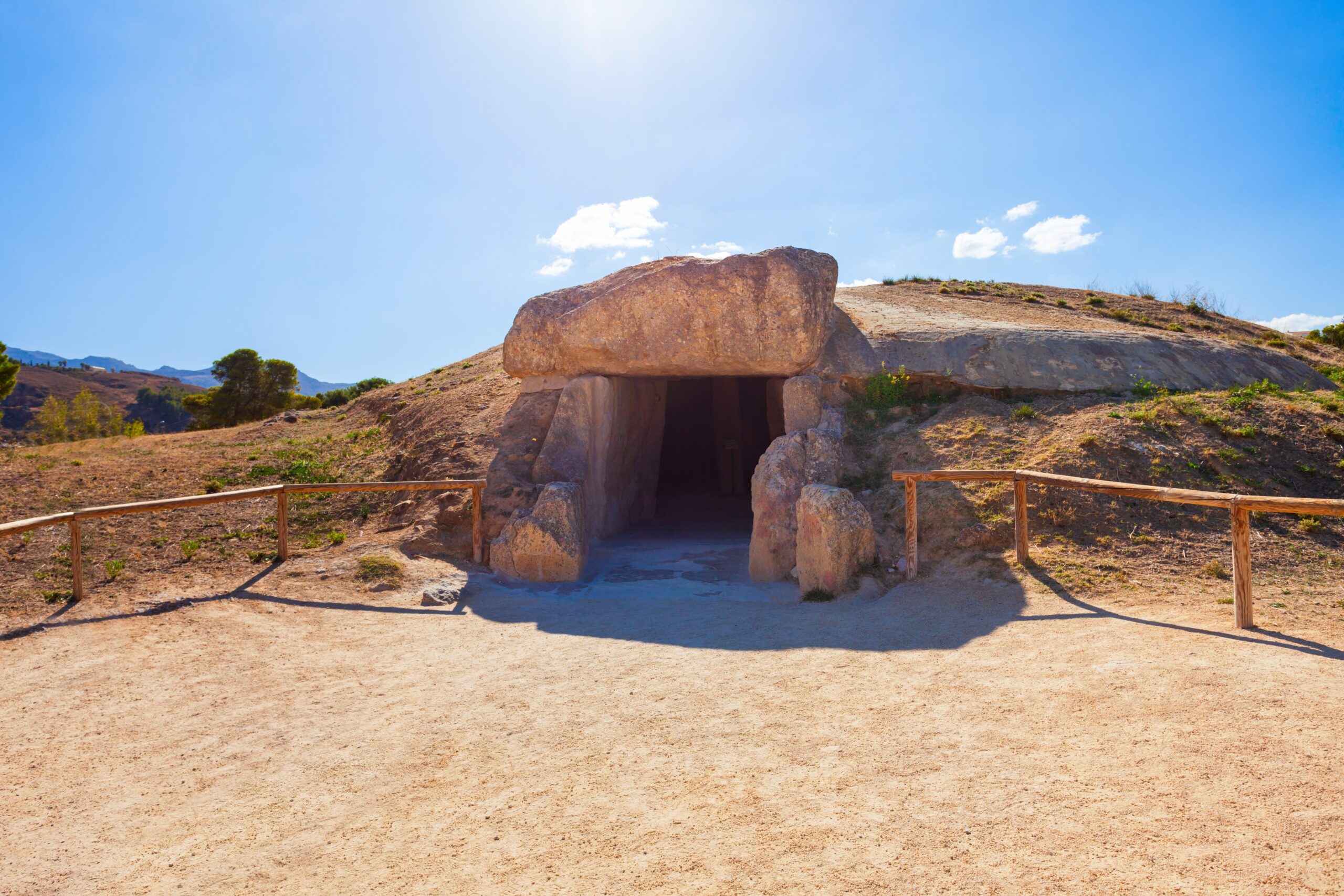
The Dolmens of Antequera in southern Spain are a collection of prehistoric megalithic tombs, constructed around 3700 BCE. These massive stone structures were used for burials and ritual purposes. The dolmens are notable for their size, with some of the stones weighing more than 100 tons. The largest and most famous of the dolmens, Menga, features an interior chamber and a long passageway, carefully aligned with a nearby mountain peak. The site’s builders had a deep understanding of architecture and astronomy, as evidenced by the alignment of the stones. The Dolmens of Antequera are now a UNESCO World Heritage Site. Visitors today can explore these remarkable monuments that have stood for thousands of years.
Maeshowe, Scotland (circa 2800 BCE)

Maeshowe is a large Neolithic chambered cairn and passage grave located on Orkney’s Mainland, Scotland. Dating back to around 2800 BCE, it is one of the finest examples of Neolithic architecture in Europe. The mound is about 35 meters in diameter, and the passage aligns perfectly with the setting sun during the winter solstice. Inside the chamber, Norse runes from a later Viking occupation were inscribed into the walls, adding to its historical intrigue. Maeshowe was part of a larger ceremonial landscape and may have served both religious and astronomical functions. It was rediscovered in the 19th century, though its significance had long been forgotten. Today, it remains a key part of the UNESCO Heart of Neolithic Orkney.
Ziggurat of Ur, Iraq (circa 2100 BCE)

The Ziggurat of Ur is an ancient stepped pyramid located in present-day Iraq, built around 2100 BCE. This massive structure was part of the Sumerian city of Ur, dedicated to the moon god Nanna. Constructed of mud-brick, the ziggurat once stood 100 feet tall and was surrounded by a bustling urban center. It served both as a religious temple and as a symbol of the city’s wealth and power. The ziggurat was rediscovered in the 1920s, and much of it has since been reconstructed. Its tiered design and grand scale continue to impress modern architects and historians alike. The Ziggurat of Ur is a striking example of ancient Mesopotamian architecture.
Pyramid of Djoser, Egypt (circa 2670 BCE)

The Pyramid of Djoser, also known as the Step Pyramid, is the earliest colossal stone structure in Egypt. Built around 2670 BCE during the reign of Pharaoh Djoser, it was designed by the famous architect Imhotep. The pyramid was constructed as part of a larger mortuary complex in Saqqara and is considered the first pyramid ever built. Unlike later pyramids, it has a step-like design, consisting of six stacked mastabas (flat-roofed tombs). Originally rising 62 meters, it served as a prototype for future Egyptian pyramids. The Pyramid of Djoser marked a significant leap in architectural innovation. Today, it remains a symbol of ancient Egypt’s power and religious traditions.
Ggantija Temples, Malta (circa 3600 BCE)
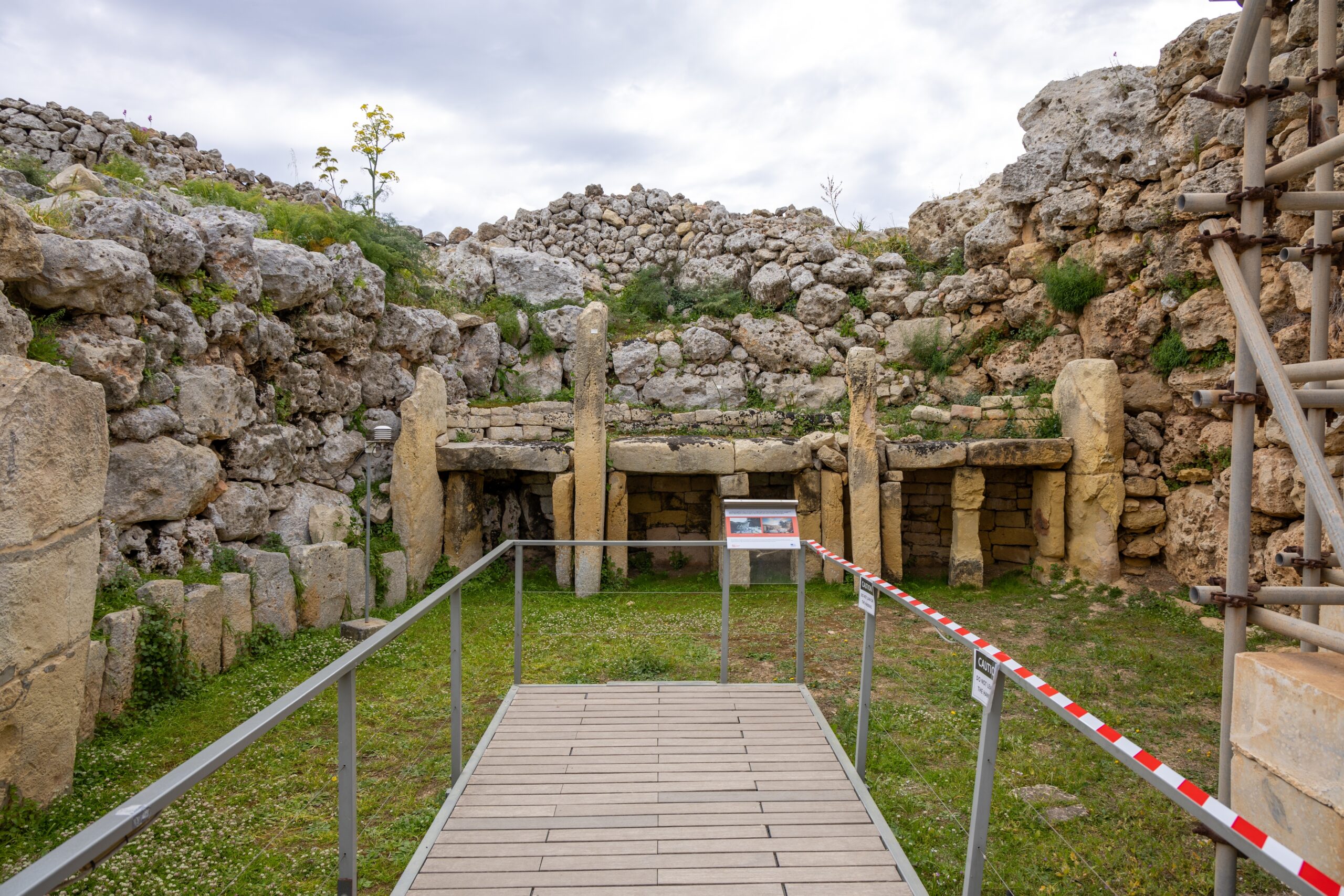
The Ggantija Temples on the island of Gozo, Malta, date back to approximately 3600 BCE, making them some of the oldest freestanding structures in the world. These megalithic temples are named after a local legend that claims they were built by giants due to the enormous size of the stones. The complex consists of two temples, each used for religious and ceremonial purposes. Archaeologists have discovered altars and evidence of animal sacrifices, suggesting the temples were a center for fertility rites. The craftsmanship in the construction is remarkable, with large, carefully fitted stones forming the walls. These temples are a UNESCO World Heritage Site and continue to be a significant archaeological find. Their mystery and grandeur make them a key piece of Malta’s prehistoric heritage.
Tarxien Temples, Malta (circa 3150 BCE)

The Tarxien Temples, located in Malta, are an impressive group of megalithic structures built around 3150 BCE. They are known for their intricate stone carvings, including representations of animals and spiral motifs, some of the finest of the period. This complex is made up of four temples, all of which were used for both religious rituals and burial purposes. The site also contains several carved statues, including one that is believed to represent a fertility goddess. Excavations have revealed tools and pottery, which give insight into the lives of Malta’s early inhabitants. Tarxien is also notable for its elaborate altars, where offerings were likely made. Today, it is a part of Malta’s rich archaeological heritage and a UNESCO World Heritage Site.
Mnajdra Temples, Malta (circa 3600 BCE)

The Mnajdra Temples, located on Malta’s southern coast, were constructed around 3600 BCE and are among the island’s most significant prehistoric monuments. The temples are aligned with the sun, marking the solstices and equinoxes, showcasing the builders’ advanced understanding of astronomy. They are built from local limestone, with intricately carved doorways and altars within. Mnajdra consists of three temples, each connected by a series of courtyards. The craftsmanship and design of these temples are incredibly sophisticated for their time, demonstrating the remarkable skills of Malta’s ancient inhabitants. These temples likely served religious and ceremonial purposes, possibly related to fertility or astronomical events. Mnajdra is part of the UNESCO World Heritage listing for Malta’s Megalithic Temples.
The Great Pyramid of Giza, Egypt (circa 2580 BCE)

The Great Pyramid of Giza, constructed around 2580 BCE, is the largest of the three pyramids on the Giza Plateau and one of the Seven Wonders of the Ancient World. Built as a tomb for the Pharaoh Khufu, it originally stood at 146.6 meters tall, though erosion has reduced it to 138.8 meters. The pyramid consists of approximately 2.3 million blocks of limestone, some weighing as much as 80 tons. The precision with which the pyramid was constructed has fascinated architects and historians for centuries. Its alignment with the cardinal points and the stars reflects the Egyptians’ advanced knowledge of mathematics and astronomy. The pyramid was part of a larger complex, including temples and smaller pyramids for queens. It remains one of the most iconic symbols of ancient Egypt.
The Sphinx, Egypt (circa 2500 BCE)

The Great Sphinx of Giza, believed to have been built around 2500 BCE, is one of the largest and most famous statues in the world. Carved from a single block of limestone, the Sphinx has the body of a lion and the head of a pharaoh, commonly believed to represent Pharaoh Khafre. The Sphinx stands guard over the Giza Plateau, near the pyramids, and is a symbol of strength and wisdom. Despite centuries of erosion, much of its original grandeur remains. Over the millennia, the Sphinx has been partially buried in sand several times and restored repeatedly. It is surrounded by myths, including the ancient Egyptian belief that it was a guardian of sacred sites. Today, it continues to captivate tourists and scholars alike.
Temple of Karnak, Egypt (circa 2055 BCE)
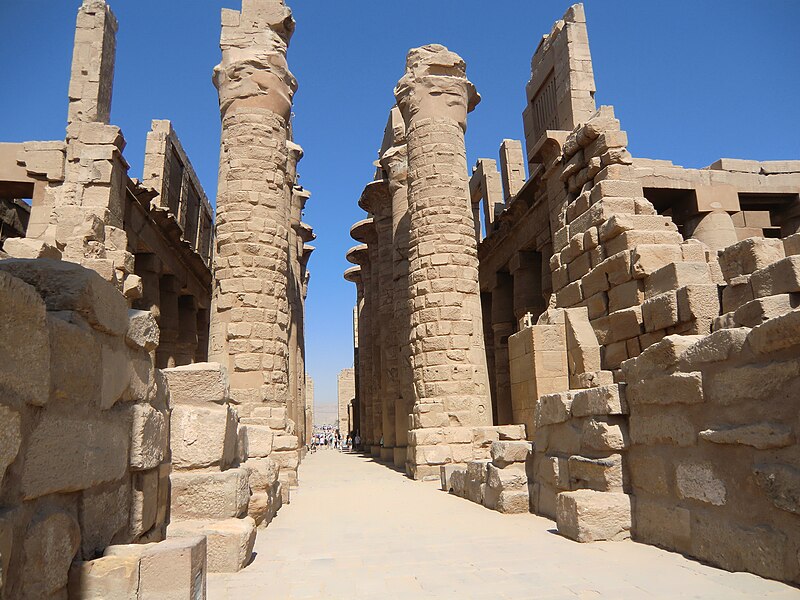
The Temple of Karnak, located near Luxor, Egypt, is one of the largest religious complexes in the world, with construction spanning from 2055 BCE to the Ptolemaic era. The temple was dedicated to the Theban gods, particularly Amun-Ra, the sun god. Over a thousand years, successive pharaohs contributed to its expansion, resulting in a massive collection of pylons, obelisks, and sanctuaries. The Hypostyle Hall, with its towering columns, is one of the most famous features of the complex, showcasing the grandeur of Egyptian architecture. The temple was a key religious site for ancient Egyptians, where priests conducted rituals and sacrifices. Its alignments with astronomical phenomena, such as the winter solstice, add to its significance. Karnak remains a treasure trove for archaeologists and historians.
The Hypogeum of Ħal-Saflieni, Malta (circa 3300 BCE)

The Hypogeum of Ħal-Saflieni is a subterranean necropolis in Malta, dating to around 3300 BCE. This underground burial site is carved into limestone and consists of three levels of chambers, with intricate carvings adorning the walls. Used for both burial and ritual purposes, the Hypogeum is one of the best-preserved prehistoric sites in Europe. It is famous for its “oracle room,” which has remarkable acoustic properties. Thousands of human remains have been found inside, providing insight into the burial practices of Malta’s ancient inhabitants. The site was discovered accidentally in 1902 during construction work. Today, the Hypogeum is a UNESCO World Heritage Site and a fascinating example of prehistoric Maltese culture.
Tumulus of Bougon, France (circa 4700 BCE)

The Tumulus of Bougon, located in western France, is a group of five burial mounds dating to around 4700 BCE. This site is one of the oldest and most significant Neolithic burial grounds in Europe. Each mound contains multiple chambers, with stones carefully arranged to form elaborate passage graves. The tombs were used for communal burials, with the remains of dozens of individuals found within. The site also yielded tools, pottery, and jewelry, offering a glimpse into the lives of the early farmers who built the tumuli. The Tumulus of Bougon is remarkable for its size and the complexity of its construction. It is now a protected archaeological site and an important piece of France’s prehistoric heritage.
Tepe Sialk, Iran (circa 6000 BCE)

Tepe Sialk is an ancient archaeological site located in central Iran, dating back to around 6000 BCE. It consists of two mounds, where early humans built mud-brick homes and ceremonial structures. Excavations have revealed pottery, tools, and even evidence of the earliest known use of writing in the region. The site was occupied for millennia, with later civilizations building upon earlier structures. Tepe Sialk provides insight into the early development of agriculture, trade, and urbanization in the region. The ziggurat found at Tepe Sialk predates other similar structures in Mesopotamia, highlighting the advanced nature of early Iranian civilizations. Today, it stands as a testament to the ingenuity of ancient peoples in this region.
This article originally appeared on Rarest.org.
More From Rarest.Org
The animal kingdom is full of surprises, and some mammals exhibit traits that are truly extraordinary. These creatures defy expectations with their unique adaptations and characteristics. Read more.
Earth’s oldest mountain ranges are not just breathtaking landmarks; they are also geological wonders that offer insights into the planet’s history and evolution. These ancient formations, some of which are billions of years old, provide a glimpse into the early processes that shaped our planet’s surface. Read more.
Plants have developed a fascinating array of defense mechanisms to survive in their environments. From physical barriers like thorns and hairs to chemical compounds that deter or harm predators, these adaptations help protect them from herbivores and environmental threats. Read more.



